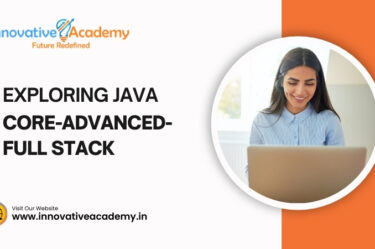Mastering Java: From Core Concepts to Advanced Development
Table of Contents
- Introduction
- Why Learn Java?
- Core Java: The Foundation
- Advanced Java: Taking Java to the Next Level
- Conclusion
Introduction
Java remains one of the most sought-after programming languages in the tech industry. With its platform independence, robustness, and scalability, Java is used for building everything from enterprise applications to mobile apps. Whether you are a beginner or an experienced developer looking to enhance your skills, mastering Java requires a strong understanding of both core and advanced Java concepts. This blog will take you through the key aspects of learning Java, from foundational topics to high-level programming techniques.
Why Learn Java?
Java is widely used across multiple domains, including web applications, enterprise software, cloud computing, and mobile development. Some of the reasons to learn Java include:
- Platform Independence – Write once, run anywhere (WORA) capability.
- Object-Oriented Programming – Supports encapsulation, inheritance, and polymorphism.
- Scalability – Suitable for small to large-scale applications.
- Rich API – Provides extensive libraries and frameworks for development.
- Strong Community Support – Large community and extensive documentation.
Core Java: The Foundation
1. Introduction to Java
Core Java forms the foundation of Java programming. It includes fundamental concepts that help developers build strong programming logic.
- History and evolution of Java
- Features of Java
- Installing Java Development Kit (JDK) and setting up an Integrated Development Environment (IDE) like Eclipse or IntelliJ IDEA
2. Java Syntax and Basics
Before diving into complex programs, it’s essential to understand Java syntax and basic constructs:
- Data types and variables
- Operators and expressions
- Control statements (if-else, loops, switch-case)
- Functions & Arrays
- String & Strings Handling
3. Object-Oriented Programming in Java
Java follows the Object-Oriented Programming (OOP) paradigm, which helps in structuring code efficiently:
- Classes and Objects – Blueprint and real-world entities.
- Constructors – Special methods for object initialization.
- Encapsulation – Data hiding using access modifiers.
- Inheritance – Code reusability by deriving new classes from existing ones.
- Polymorphism – Method overloading and overriding for flexibility.
- Abstraction – Hiding implementation details from users.
4. Exception Handling
Handling errors efficiently is crucial in Java:
- Try-catch blocks
- Multiple catch statements
- Finally block
- Throw and throws keyword
- Custom exceptions
5. File Handling and I/O Operations
File handling is an essential aspect of Java programming:
- Reading and writing files using FileReader and FileWriter
- Handling binary files with FileInputStream and FileOutputStream
- Working with serialization and deserialization
Advanced Java: Taking Java to the Next Level
Advanced Java covers technologies and frameworks that help in building web-based and enterprise-level applications.
1. Collections Framework
Java provides a rich set of built-in data structures for handling collections of data:
- List (ArrayList, LinkedList)
- Set (HashSet, TreeSet)
- Map (HashMap, TreeMap)
- Queue (PriorityQueue, LinkedList)
2. Multithreading and Concurrency
Java supports multithreading, allowing multiple tasks to run simultaneously:
- Thread lifecycle
- Creating threads using the Thread class and the Runnable interface
- Synchronization and inter-thread communication
- Executors and thread pools
3. Introduction to Java Swing
Swing is part of Java Foundation Classes (JFC) and includes components like JFrame, JButton, JTextField, JLabel, JPanel, etc.
Key Swing Components
- JFrame – Main window container.
- JButton – Clickable button.
- JLabel – Display static text.
- JTextField – Accepts user input.
- JPanel – A container for grouping components.
4. Java Networking Concepts
Networking in Java is used for data transfer, communication between computers, and building distributed applications.
Basics of Java Networking
Java provides classes in the java.net package to enable network communication.
- InetAddress – Represents IP addresses.
- Socket & ServerSocket – Used for TCP communication.
3. JDBC (Java Database Connectivity)
JDBC is used to connect Java applications with databases:
- Establishing a connection with a database
- Executing SQL queries
- PreparedStatement vs Statement
- Handling transactions
4. Java Servlets
Servlets are server-side components for handling web requests:
- HTTP request and response handling
- Servlet lifecycle
- Session management using cookies and HTTP sessions
- ServletConfig and ServletContext
5. JavaServer Pages (JSP)
JSP is used for creating dynamic web pages:
- JSP directives, scriptlets, and expressions
- Implicit objects in JSP
- JSP Standard Tag Library (JSTL)
- Expression Language (EL)
Conclusion
Mastering Java requires a structured learning approach, starting with core concepts and progressing to advanced development techniques. Whether you are developing standalone applications or building enterprise-level solutions, Java provides the tools and frameworks necessary for success. By gaining expertise in Core Java and Advanced Java, you can open doors to various career opportunities in software development, web applications, and cloud computing.
Are you ready to embark on your Java learning journey? Start with the fundamentals, practice coding, and explore advanced frameworks to become a Java expert!



No Comment